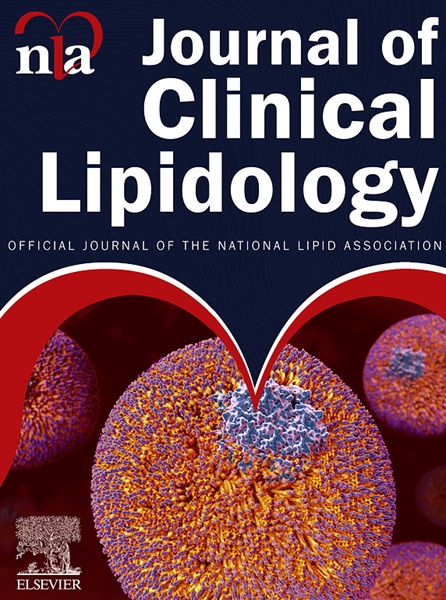Investigation of the genetic background of familial hypercholesterolemia in a Turkish cohort and its clinical implications
IF 4.6
3区 医学
Q2 PHARMACOLOGY & PHARMACY
引用次数: 0
Abstract
OBJECTIVE
Familial hypercholesterolemia (FH) is a genetic disorder characterized by elevated plasma cholesterol and an increased risk of early-onset coronary artery disease (CAD). FH has a complex genetic basis. Advances in molecular genetic techniques have deepened our understanding of FH, which is critical for accurate classification, CAD risk assessment, and optimized treatment strategies. This study aimed to evaluate the monogenic etiologies of FH and polygenic background as a possible cause of clinical FH phenotype and their relationship to clinical outcomes in a Turkish cohort.
METHODS
Patients were selected based on the Simon Broome Criteria. Various molecular techniques were employed, including Sanger sequencing, multiplex-ligation dependent probe amplification (MLPA), next-generation sequencing (NGS) panel analysis, and RNA-based studies. For the first time in a Turkish FH cohort, we calculated 6-single nucleotide polymorphism (SNP) and 12-SNP scores and compared them with a control group.
RESULTS
Multiple variants were identified, including 2 novel variants and a synonymous splice region variant in LDLR, which was shown to disrupt splicing through RNA analysis. The 6-SNP and 12-SNP scores displayed patterns consistent with other populations.
CONCLUSION
Our findings suggest subtle differences in the monogenic etiology of FH in the Turkish population, with variant negative patients predominantly exhibiting polygenic background. Additionally, polygenic factors appear to influence the phenotype even in variant-positive individuals.
土耳其队列家族性高胆固醇血症遗传背景调查及其临床意义
目的:家族性高胆固醇血症(FH)是一种以血浆胆固醇升高和早发性冠状动脉疾病(CAD)风险增加为特征的遗传性疾病。FH具有复杂的遗传基础。分子遗传学技术的进步加深了我们对FH的理解,这对于准确分类、CAD风险评估和优化治疗策略至关重要。本研究旨在评估土耳其队列中FH的单基因病因和多基因背景作为临床FH表型的可能原因及其与临床结果的关系。方法:根据Simon Broome标准选择患者。采用了多种分子技术,包括Sanger测序,多重连接依赖探针扩增(MLPA),下一代测序(NGS)面板分析和基于rna的研究。首次在土耳其FH队列中,我们计算了6-单核苷酸多态性(SNP)和12-SNP评分,并将其与对照组进行了比较。结果:在LDLR中发现了多个变异,包括2个新变异和一个同义剪接区域变异,通过RNA分析显示该变异会破坏剪接。6-SNP和12-SNP得分显示与其他人群一致的模式。结论:我们的研究结果表明,土耳其人群中FH的单基因病因存在细微差异,变异阴性患者主要表现为多基因背景。此外,即使在变异阳性个体中,多基因因素似乎也会影响表型。
本文章由计算机程序翻译,如有差异,请以英文原文为准。
求助全文
约1分钟内获得全文
求助全文
来源期刊
CiteScore
7.00
自引率
6.80%
发文量
209
审稿时长
49 days
期刊介绍:
Because the scope of clinical lipidology is broad, the topics addressed by the Journal are equally diverse. Typical articles explore lipidology as it is practiced in the treatment setting, recent developments in pharmacological research, reports of treatment and trials, case studies, the impact of lifestyle modification, and similar academic material of interest to the practitioner.
Sections of Journal of clinical lipidology will address pioneering studies and the clinicians who conduct them, case studies, ethical standards and conduct, professional guidance such as ATP and NCEP, editorial commentary, letters from readers, National Lipid Association (NLA) news and upcoming event information, as well as abstracts from the NLA annual scientific sessions and the scientific forums held by its chapters, when appropriate.

 求助内容:
求助内容: 应助结果提醒方式:
应助结果提醒方式:


